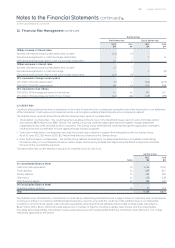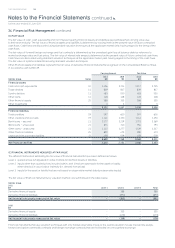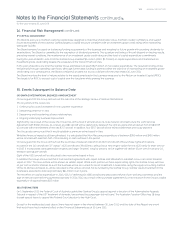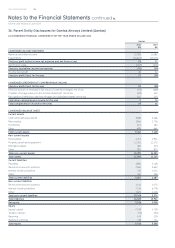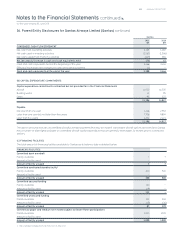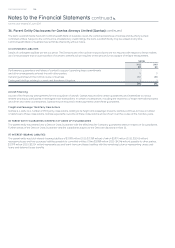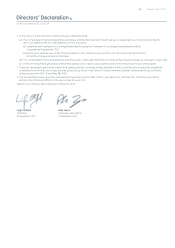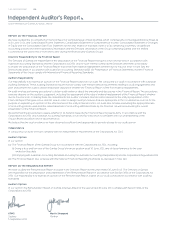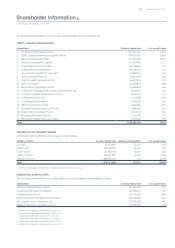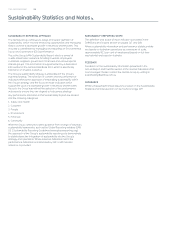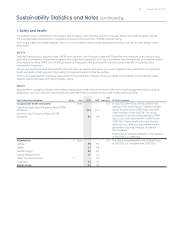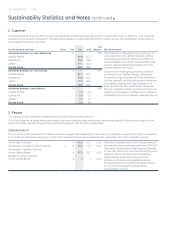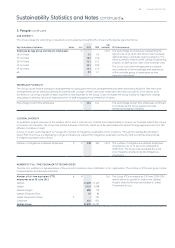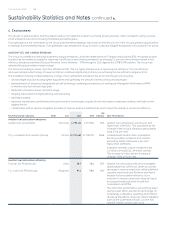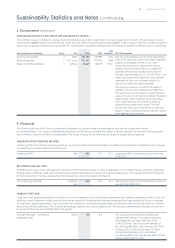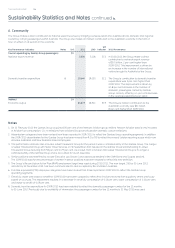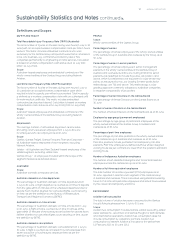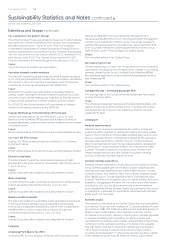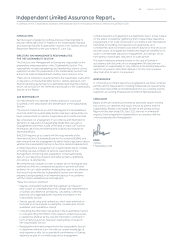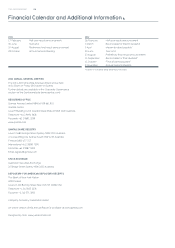Qantas 2011 Annual Report Download - page 113
Download and view the complete annual report
Please find page 113 of the 2011 Qantas annual report below. You can navigate through the pages in the report by either clicking on the pages listed below, or by using the keyword search tool below to find specific information within the annual report.
111 ANNUAL REPORT 2011
Sustainability Statistics and Notes continued
The Qantas Group’s commitment to providing a safe workplace demonstrates care for our people. Safety and health programs across
the business target the prevention of workplace injuries and the promotion of health and well-being.
The Group’s Safety and Health strategic vision is “to be recognised as the world’s leading airline group in air, ground and people safety
and health”.
SAFETY
Total Recordable Injury Frequency Rate (TRIFR) and Lost Work Case Frequency Rate (LWCFR) are the new measures of the Group’s injury
prevention performance. These new measures encourage even greater focus on injury prevention and management, and improve visibility
of workplace incidents. TRIFR and LWCFR performance forms part of the scorecard for incentive plans under the Group’s Executive
remuneration framework.
The Group’s operations, work environments and work tasks are diverse and varied. As a result, segments have tailored the Occupational
Health and Safety (OHS) aspects of their safety management system to their risk proles.
The Group is dedicated to continuous improvement in the prevention of injuries, illness, accidents and incidents through effective safety
systems, quality processes and a strong safety culture.
HEALTH
Absenteeism is a lagging indicator which reects organisation health and well-being and the level of staff engagement and productivity.
Additionally, low injury rates and absenteeism are generally linked to positive trends in staff morale and productivity.
Key Performance Indicators Notes Unit
GRI
Indicator Performance
Occupational health and safety Rate LA In / the Group introduced two new
metrics of OHS performance: Total Recordable
Injury Frequency Rate (TRIFR) and Lost Work
Case Frequency Rate (LWCFR). The Group
achieved a per cent improvement in TRIFR
and a per cent improvement in LWCFR from
/. These results reect the Group’s
dedication to continuous improvement in the
prevention of injuries, illnesses, accidents
and incidents.
There were no aviation fatalities or OHS fatalities
in / or /.
Total Recordable Injury Frequency Rate (TRIFR)
(Australia) . .
Lost Work Case Frequency Rate (LWCFR)
(Australia) . .
Absenteeism Days LA The rate of absenteeism for the Qantas Group
in / is consistent with /.
Qantas . .
Jetstar . .
Qantas Freight . .
Qantas Frequent Flyer . .
Jetset Travelworld Group –.
Corporate . .
Qantas Group . .
1. Safety and Health


